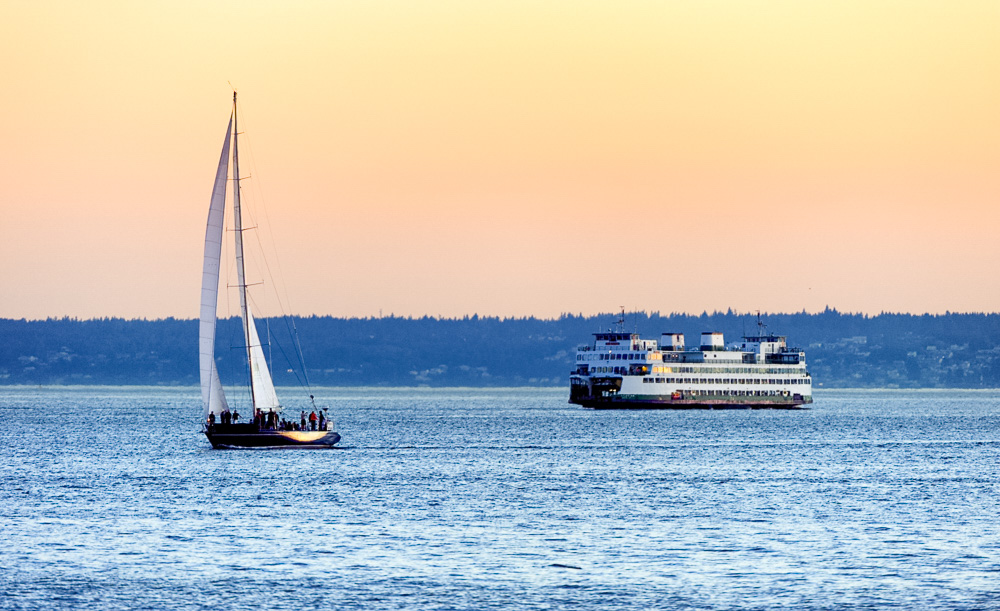
Toward the end of last year, as the Skagit River Hydroelectric Project relicensing work was intensifying, I became aware that many of our partners in the process were experiencing Seattle City Light as hard to work with and non-responsive. That was especially true of the Tribes who hunt, fish, and live near our dams and powerhouses.
I feel strongly about the need to acknowledge mistakes, learn from them, and change course when needed. When we got the feedback that the process was not going well for our partners, we realized the need for change. We worked to reset our relationships with participating Tribes and agencies by making collaboration the centerpiece of the relicensing process. We also redoubled our commitment to go beyond basic dam mitigation and to improve the entire Skagit watershed and the salmon runs that have existed there for millennia.
We are at a pivotal moment in history. The City of Seattle gets approximately 20% of its power from the Skagit Project’s three dams (Gorge, Diablo and Ross). Climate change makes this carbon-free resource vital to the people who depend on the electricity produced there; at the same time, hydropower is also part of today’s solution to global climate change, which as we know is a real and immediate threat to life in the Northwest. According to the EPA’s climate offset calculator, the Skagit Project generates enough clean electricity every year to avoid the CO2 emissions from burning nearly 2 billion pounds of coal.
It’s also true that our infrastructure has a significant impact on the native lands and culture of the Upper Skagit Indian Tribe, the Swinomish Indian Tribal Community, and the Sauk-Suiattle Indian Tribe. The dams that power the Northwest are challenging for fish, particularly salmon. Access to plentiful stocks of all five salmon species is essential to the Tribes’ health and way of life, and the combined effects of the dams, climate change, and the loss of habitat are threatening that way of life. I believe we have a moral obligation to do more to address our impacts, and I am committed to making sure that City Light meets that obligation.
After the reset, City Light worked collaboratively to revise our preliminary study plan and to prioritize the studies that were and are most important to our license partners. The results of those studies will inform the requirements that the Federal Energy Regulatory Commission (FERC) puts on our next license. In April, at the request of the Tribes and regulatory agencies, we committed to study the feasibility of fish passage, and to use study methods developed collaboratively with them. That research is being done right now, and the findings with be shared with all license participants.
The Skagit is one of the few systems of its size that does not have fish passage installed. The geography of the area led us (and many other scientists) to believe there were large boulders and falls that could impede fish from moving upriver beyond Gorge Powerhouse. Based partly on that, parties to the current settlement agreement decided it was more beneficial to focus on flow management than fish passage. That was almost 30 years ago. That science has been called into question and we now recognize the value of performing additional studies using modern tools and methods.
We hear those who are calling on us to build fish passage now. However, this is not City Light’s call. This is a decision that our partners, FERC, and City Light will make based upon the science developed as part of the study plan. To be clear, City Light will support and implement the outcomes of the relicensing process. To inform this important decision, we need to understand what the full impacts of fish passage would be on the environment we want to protect. Ecosystems are complex. We need to invest time and resources to develop the knowledge that our partners and FERC need to make sound decisions. That’s the purpose of the study plan.
We’ve also heard from those who believe we should immediately commit to an equitable investment in both fish passage and habitat enhancement. We don’t disagree with the need for investment, and in fact, our goal is to be equally – or more – effective in protecting fish populations and enhancing habitat. We fully expect that the studies we are collaboratively doing now will dictate what equitable means with respect to this project. The operating license that we hope to receive in 2025 will be responsive to the latest science and will consider all we’ve learned about climate change and fish impacts in the 30 years since the current license was issued. To assume that equitable is the same as what’s been done elsewhere, is premature and potentially very wrong. The investment required by FERC could easily be greater than what was required for other comparable projects.
We are committed to doing what’s right for the environment and the people of the region, especially by having respectful government-to-government relationships with Tribes and other affected communities. In the meantime, we will continue to work in partnership to build a clean energy future and a vibrant Skagit River ecosystem. There are some challenging issues on the horizon. Still, with a mutual commitment to collaboration, we can develop solutions the next generation can be proud of.
Take care and stay safe.

Debra J. Smith
General Manager and CEO
Seattle City Light